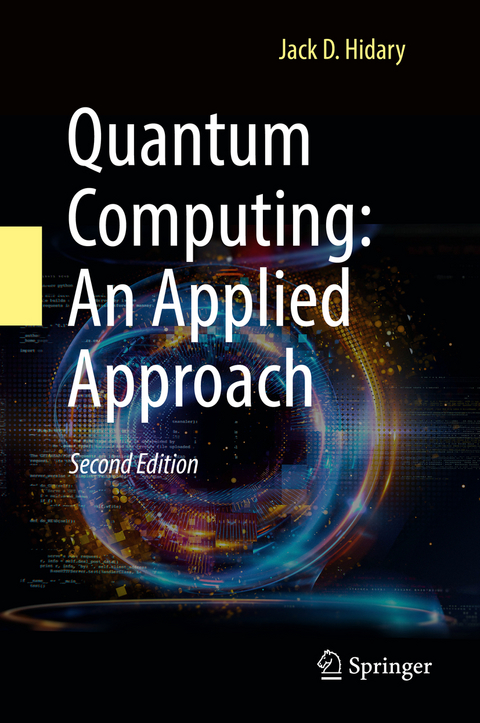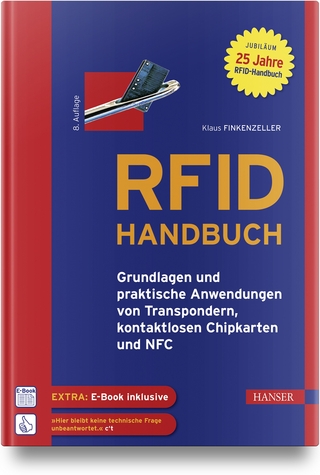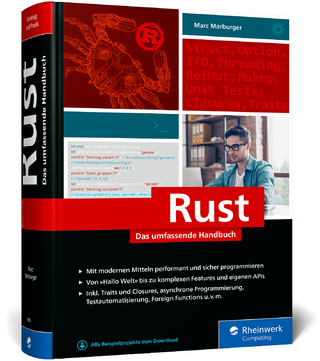
Quantum Computing: An Applied Approach
Springer International Publishing (Verlag)
978-3-030-83273-5 (ISBN)
This book integrates the foundations of quantum computing with a hands-on coding approach to this emerging field; it is the first to bring these elements together in an updated manner. This work is suitable for both academic coursework and corporate technical training.
The second edition includes extensive updates and revisions, both to textual content and to the code. Sections have been added on quantum machine learning, quantum error correction, Dirac notation and more. This new edition benefits from the input of the many faculty, students, corporate engineering teams, and independent readers who have used the first edition.
This volume comprises three books under one cover: Part I outlines the necessary foundations of quantum computing and quantum circuits. Part II walks through the canon of quantum computing algorithms and provides code on a range of quantum computing methods in current use. Part III covers the mathematical toolkit required to master quantum computing. Additional resources include a table of operators and circuit elements and a companion GitHub site providing code and updates.
Jack D. Hidary is a research scientist in quantum computing and in AI at Alphabet X, formerly Google X.
lt;p>Jack D. Hidary focuses on AI and on quantum computing at Alphabet X, formerly Google X. He and his group develop and research algorithms for NISQ-regime quantum processors as well as create new software libraries for quantum computing. In the AI field, Jack and his group focus on fundamental research such as the generalization of deep networks as well as applied AI technologies.
-Preface the the Second Edition.- Preface to the First Edition.- Acknowledgements.- Navigating this Book.- I. Foundations.- 1. Superposition, Entanglement and Reversibility.- 2. A Brief History of Quantum Computing.- 3. Qubits, Operators and Measurement.- 4. Complexity Theory.- II. 5. Building a Quantum Computer.- 6. Development Libraries for Quantum Computer Programming.- 7. Teleportation, Superdense Coding and Bell's Inequality.- 8. The Canon: Code Walkthroughs.- 9. Quantum Computing Methods.- 10. Applications and Quantum Supremacy.- III. Toolkit.- 11. Mathematical Tools for Quantum Computing I.- 12. Mathematical Tools for Quantum Computing II.- 13. Mathematical Tools for Quantum Computing III.- 14. Dirac Notation.- 15. Table of Quantum Operators and Core Circuits.- Works Cited.- Index.
"This well-put-together book is a valuable addition to the literature in the field." (Shrisha Rao, Computing Reviews, February 3, 2023)
“This well-put-together book is a valuable addition to the literature in the field.” (Shrisha Rao, Computing Reviews, February 3, 2023)
| Erscheinungsdatum | 04.11.2021 |
|---|---|
| Zusatzinfo | XXIII, 422 p. 66 illus., 46 illus. in color. |
| Verlagsort | Cham |
| Sprache | englisch |
| Maße | 155 x 235 mm |
| Themenwelt | Mathematik / Informatik ► Informatik ► Programmiersprachen / -werkzeuge |
| Mathematik / Informatik ► Informatik ► Theorie / Studium | |
| Mathematik / Informatik ► Mathematik | |
| Naturwissenschaften ► Physik / Astronomie ► Quantenphysik | |
| Naturwissenschaften ► Physik / Astronomie ► Theoretische Physik | |
| Schlagworte | Borne Rule • Bristlecone • Cirq • Grover's algorithm • Grover’s Algorithm • IBM quantum • Probability density function • Q# • QISkit • Quantum advantage • Quantum AI • Quantum Computation • Quantum Computers • Quantum Computing • Quantum machine learning • Quantum optimization • Quantum supremacy • qubits • Shor's algorithm • Shor’s algorithm • superconducting qubits • Trapped ion |
| ISBN-10 | 3-030-83273-2 / 3030832732 |
| ISBN-13 | 978-3-030-83273-5 / 9783030832735 |
| Zustand | Neuware |
| Haben Sie eine Frage zum Produkt? |
aus dem Bereich


